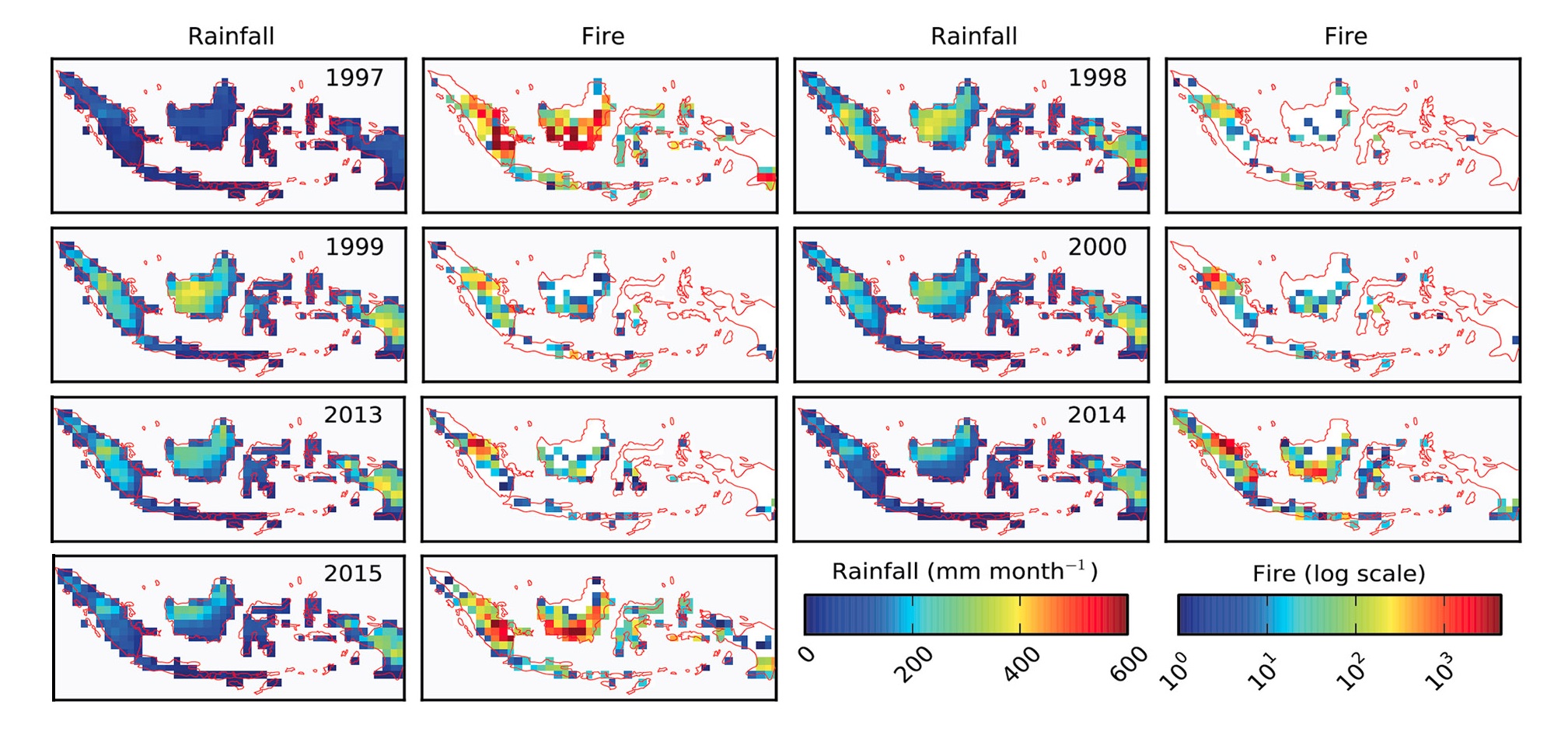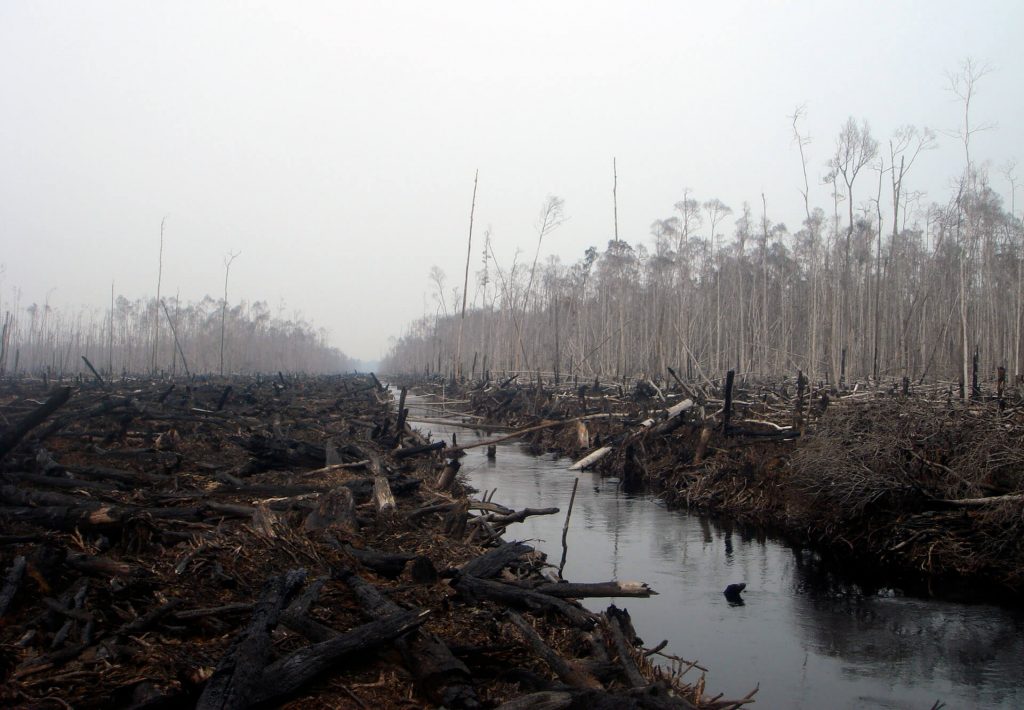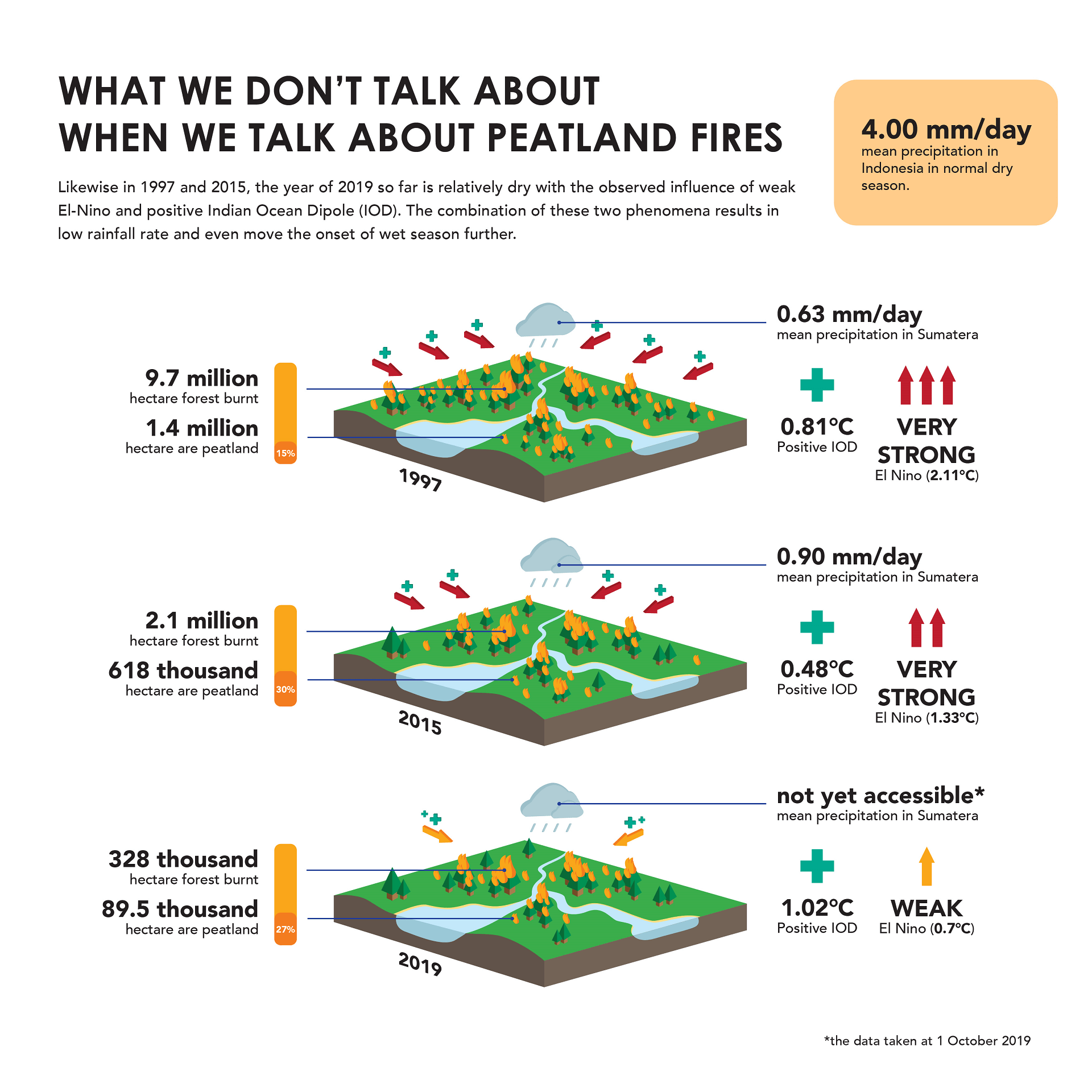Meet Rahman, he is a 10-year-old student living Pekanbaru. He is supposed to go to school every weekday. However, it has been two weeks since the school was closed, not due to the public holiday but because of the dangerous levels of pollutants present in the air coming from the haze of forest and land fires. On the second day since his stay-at-home period, Rahman was brought to the local hospital with symptoms of headache, fatigue, and labored breathing. Turns out, Rahman is now among approximately 15,000 upper respiratory tract infection (ISPA) patients recorded in Riau Province.
This September, the National Disaster Management Agency (BNPB) recorded more than 144,000 people diagnosed with ISPA. This number came from people living in Pekanbaru, Palembang, Palangkaraya, Pontianak, and Jambi, where the haze issue has become a problem since at least last June. The air pollution index in some Sumatran and Kalimantan cities were at the range of unhealthy to hazardous levels. The cities are theoretically inhabitable. These pollutants come from the haze due to forest and land fires in Sumatra and Kalimantan provinces. The severity of this year’s haze issue led the people to actively utilize their social media to expose the fire and haze issues. Mainstream media report that the cause of fires is large scale intentional forest and land burning. To date, several individuals and companies have been named as suspects.
Unfortunately, this year’s disaster is not happening for the first time in Indonesia. Enormous forest and land fire also occurred in 1997 and 2015. Likewise this year, peatland area was extensively and severely damaged. The cause of fires in 1997 and 2015 were also said due to irresponsible burning practice. The fires in 1997 burnt 9.7 million hectares of forest and lands, including peatland, while the emitted haze reached the Philippines and Thailand. The fire in 2015 wiped out around 2 million hectares of forest and lands. It might not be as extensive as the 1997 disaster but a higher ratio of peatland areas were destroyed. The financial loss was estimated to reach 220 trillion, next to the devastating environmental damage with the least estimation of 0.2 gigatons of carbon being released into the atmosphere. This brings a global attention to Indonesia. After the 2015’s peatland fires, the Indonesian government established the Peatland Restoration Agency (BRG) to improve the management of peatland area and principally safeguard the peatland in the future.
After the establishment of BRG, regulations and policies have been formulated and implemented. Measures to curb the practice of peatland burning have been taken by disseminating innovation and technology, providing incentive, and socializing the negative impact of intentional burning. In reality, the practice of land burning is still massive in Indonesia. Individuals and companies still consider setting fire to land as the cheapest and most effective way to prepare peatland for cultivation. This leads to the question – if intentional peatland burning is still being practiced every year, why the incident in the years of 1997, 2015, and 2019 cause such extensive impacts?
One of the answers is provided by nature itself. Likewise in 1997 and 2015, the year of 2019 so far is relatively dry with the observed influence of weak El-Nino and positive Indian Ocean Dipole (IOD). The combination of these two phenomena results in low rainfall rate and even move the onset of wet season further. The following water crisis prompts people to take a bath, at the least, and causes large harvesting failures, at the worst. In peatland regions, the lack of water triggers expansive land fires.
Although the terminology of El-Nino and IOD sounds esoteric and intimidating, the principle of these phenomena lies in nature’s ability to form clouds that bring rain. El-Nino phase starts with the warming of the Pacific Ocean’s surface near Peru which causes shift in rainfall circulation. This results in increasing precipitation rate in South America but reducing rainfall rate over Indonesia and Australia. IOD has the same principle with the changing temperature of the Indian Ocean’s surface. The positive phase of IOD is marked with lower than average sea surface temperature near Sumatra and Java. This results in weak convective (i.e. cloud formation) activity that significantly decreases rainfall rate over Indonesia.

A number of studies have discussed the link between active El-Nino, positive IOD, and fire intensity in Indonesia. Intensive and prolonged fire season indeed occurs during El-Nino years, this includes the events of 1997 and 2015. The fire season is at least twice as intensive when the IOD is positive than when it is negative. In 1997, El Nino phase was stronger compared to 2015 where the temperature anomalies were twice higher. The meteorological agencies of Indonesia and Australia have reported that El-Nino influence has weakened in September 2019 while the positive IOD is likely to persist until December.
In short, El-Nino phase and positive IOD result in less precipitation that should have naturally diminished forest and land fire. The prolonged dryness brings lower inland water availability, particularly in peatland which acts like a giant sponge. This left the organic matters vulnerable to fire. In peatland area, the fire does not only burn the soil surface, but also enters and spreads under the surface. Due to this fact, fire in peatland is indeed hard to extinguish. By keeping the humidity – a.k.a the water level – the fire will not be as expansive as when the soil is dry.
One way to maintain the humidity is by applying an integrated water management system in managing land uses on peat soil. Unlike the conventional water system that drains the water, an integrated water management system will regulate the water, making it available all year long, even during the dry season. As a result, any source of fire will not spread easily in the humid peat soil. In principle, maintaining soil humidity in peatland area is vital to prevent widespread land fire.
Up to this point, we have learned that many factors contribute to peatland fire, both from anthropogenic and natural causes. The straightforward measure would be essentially to monitor everything: the implementation of burning restriction, the efforts in reducing peatland degradation, and the estimated anomalies in natural phenomenon. That being said, periodical phenomenon such as El-Nino and IOD are relatively predictable using the existing scientific methods. Educating communities, particularly those who live in the vulnerable regions, on fire preparedness is highly crucial. Thus, learning platform and robust standard on best practice of water management, especially on the peatland management should be escalated into provincial level to bring larger impact.







